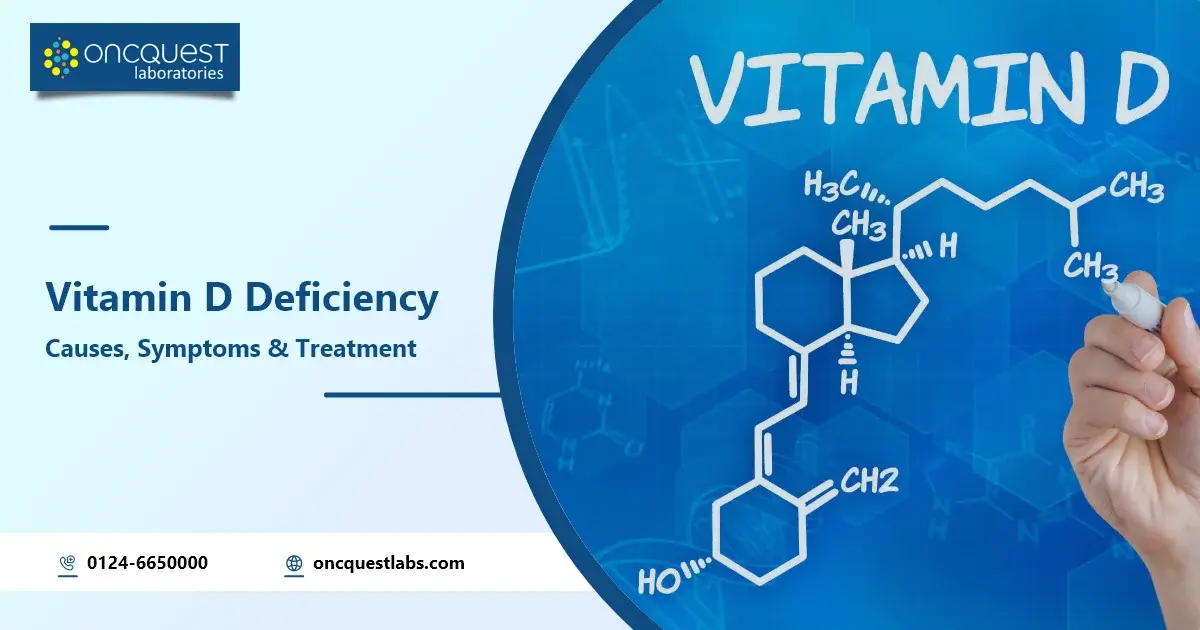Contents
- 1 Overview
- 2 What are the sources of Vitamin D?
- 3
- 4 What are the functions of Vitamin D?
- 5 What causes Vitamin D deficiency?
- 6
- 7 What are the symptoms of Vitamin D deficiency?
- 8 How to overcome Vitamin D deficiency?
- 9 Can you ever have too much Vitamin D?
- 10 What is the daily requirement of Vitamin D?
- 11 How is Vitamin D deficiency diagnosed?
- 12 Did You Know?
Overview
There is a reason why Vitamin D is sometimes called the “sunshine vitamin”. A fat-soluble vitamin, Vitamin D is produced in your skin in response to sunlight, and Vitamin D is unique because your skin makes it by sunlight. Vitamin D is one of many vitamins our bodies need to stay healthy.
Vitamin D deficiency is quite common, and most people are unaware of it.
Thankfully, a vitamin D deficiency is usually easy to fix.
What are the sources of Vitamin D?
You can get Vitamin D in several ways, such as :
- Exposure to sun
- Through the foods, you eat.
- Through nutritional supplements
What are the functions of Vitamin D?
Vitamin D has many functions, including:
- Regulating the absorption of Calcium and Phosphorus
- Facilitating normal immune system function.
- Normal growth and development of bones and teeth
- Improved resistance against certain diseases.
Vitamin D helps in:
- Reducing your risk of multiple sclerosis
- Decreasing your chance of developing heart disease
- Regulating mood and warding off depression
- Losing weight
What causes Vitamin D deficiency?
Many people have insufficient Vitamin D levels because:
- They live where sunlight is limited in winters
- They stay most of the time indoors, limiting their exposure to the sun
- People with darker skin tend to have lower blood levels of Vitamin D because the pigment (melanin) acts as a shade, reducing Vitamin D production.
- Lack of the right diet
- Poor absorption of Vitamin D
- Having a metabolic need for higher amounts.
Other people at high risk of Vitamin D deficiency include:
- People with inflammatory bowel disease or other conditions that disrupt normal fat digestion are at higher risk.
- People who are obese tend to have lower blood Vitamin D levels as Vitamin D accumulates in excess fat tissues. It is not readily available for use by the body when needed.
- People who have undergone gastric bypass surgery typically remove the upper part of the small intestine where Vitamin D is absorbed.
- People with kidney and liver diseases. These diseases reduce the amount of an enzyme needed to change Vitamin D to a form that is used in the body
- People who are taking medications such as laxatives, steroids, cholesterol-lowering drugs, seizure control drugs.
- Infants who exclusively breastfeed need a Vitamin D supplement.
Conditions resulting from prolonged Vitamin D deficiency
- Rickets: A disorder that causes infants and children to have soft and weak bones caused by failure of bone tissue to harden.
- Osteomalacia: A condition in adults of weak and softened bones that can be reversed with supplementation. Osteomalacia is different from osteoporosis. In the latter, bones become porous and brittle, and the condition is irreversible.
What are the symptoms of Vitamin D deficiency?
Signs and symptoms may include:
- Being sick or getting infections often
- Fatigue and tiredness
- Bone and back pain
- Depression
- Hair Loss
- Muscle pain
- Weight gain
- Anxiety
- Impaired wound healing
How to overcome Vitamin D deficiency?
Eating more foods containing Vitamin D and getting a little bit of sunlight and Vitamin D supplements are the treatment for Vitamin D deficiency.
Can you ever have too much Vitamin D?
Yes! The deficiency of Vitamin D can cause problems, but excess of it can also lead to Vitamin D toxicity. Also called hypervitaminosis D, is a rare but potentially serious condition, usually caused by megadoses of Vitamin D supplements.
The main consequence of Vitamin D toxicity is a buildup of calcium in the blood (hypercalcemia), which can cause nausea and vomiting, weakness, and frequent urination. Symptoms might progress to bone pain and kidney problems, such as the formation of calcium stones.
What is the daily requirement of Vitamin D?
The amount of Vitamin D needed daily depends on your age. Average daily recommended amounts from the Food and Nutrition Board for different ages are listed below in International Units (IU):
| Birth to Life Stage | Recommended Amount |
| Birth to 12 Months | 400 IU |
| Children 1-13 years | 600 IU |
| Teens 14-18 years | 600 IU |
| Adults 19-70 years | 600 IU |
| Adults 71 years and older | 800 IU |
| Pregnant and breastfeeding women | 600 IU |
How is Vitamin D deficiency diagnosed?
Your doctor may order the below tests if you have symptoms of Vitamin D deficiency:
1. Vitamin D 25, Hydroxy
This test measures the level of vitamin D in the blood. Two forms of vitamin D can be measured in the blood, 25-hydroxyvitamin D and 1,25-dihydroxyvitamin D. The 25-hydroxyvitamin D is the major form found in the blood and is important for bone health and growth.
This test is useful for the diagnosis of Vitamin D deficiency and Hypervitaminosis D. It is also used for diagnosis of causes of Rickets & Osteomalacia and for monitoring Vitamin D replacement therapy.
2. Vitamin D 1, 25 Dihydroxy
1,25-Dihydroxy vitamin D plays a primary role in the maintenance of calcium homeostasis. A part of circulating 25-hydroxy vitamin D is converted to 1,25-dihydroxy form in the kidneys. This test may be useful for evaluating calcium metabolism in individuals with hypercalcemia or renal failure in addition to Vitamin D, 25-Hydroxy testing.
Did You Know?
Unfortunately, catching the sun’s rays in a sunny office or driving in a car won’t help to obtain vitamin D as window glass completely blocks UVB ultraviolet light.




